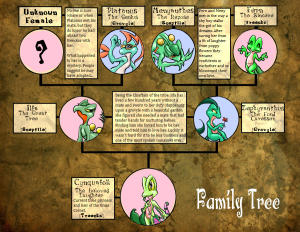To foster kids’ curiosity and build resilience, expose them to age-appropriate scary stories. These narratives can teach them that it’s okay to feel scared and that they can confront and overcome fears.
Introducing children to the thrilling world of horror stories can be both beneficial and entertaining. While some parents may be hesitant, literature experts and child psychologists emphasize the positive impact of these tales on kids. The experience of reading scary stories can help children develop important life skills, such as problem-solving and managing fear.
Additionally, it allows them to explore the boundaries of fear, ultimately fostering bravery and resilience. By striking a balance between the excitement of fright and the satisfaction of conquering it, kids can derive valuable lessons from these captivating narratives.
Table of Contents
ToggleBenefits Of Kids Reading Horror Stories
When it comes to Benefits of Kids Reading Horror Stories, there are several advantages that might surprise you. While some parents may hesitate to introduce their children to spooky tales, the benefits of such stories can’t be ignored.
Development Of Important Skills
Exposure to horror stories can help kids develop critical thinking skills and enhance their imagination. By engaging with scary narratives, children learn to analyze situations and make decisions.
Encouragement Of Problem-solving
Reading horror stories challenges children to think creatively and find solutions to the characters’ dilemmas. This fosters problem-solving skills and encourages kids to overcome obstacles.
Normalization Of Fear
Through exposure to scary stories, children learn that it is okay to feel afraid. This normalization of fear can help kids manage their emotions and cope with anxiety in a healthy way.
Exploration Of Boundaries
Horror stories allow kids to explore the boundaries of their fears in a safe environment. By confronting and understanding fear, children can learn to navigate their own limits and boundaries effectively.

Credit: www.amazon.com
Why Kids Are Drawn To Scary Stories
Children are naturally curious and drawn to the unknown. Scary stories provide a sense of excitement and exhilaration, allowing kids to explore their fears in a safe and controlled environment. The appeal of scary stories to kids lies in the thrill of being scared and the experience of overcoming fear.
Fascination With Fear
Children have a natural fascination with fear. The feeling of being scared can be an exhilarating experience that triggers adrenaline and heightens emotions. Scary stories provide a way for kids to vicariously experience fear in a controlled setting, while also feeling the rush of excitement and the satisfaction of ultimately conquering their fears.
Experience Of Bravery
Scary stories allow children to confront their fears and develop a sense of bravery. By immersing themselves in frightening tales, kids have the opportunity to navigate through challenging situations alongside the characters in the story. This can empower them to face their own fears and develop resilience, a crucial aspect of emotional development.
Expert Opinions On Kids And Horror Stories
When it comes to kids and horror stories, there are varying opinions among experts. Some believe that exposing children to scary stories can be beneficial for their development, while others argue that it may have negative effects. In this section, we will explore the perspectives of August House Publishers and CNN on this topic.
August House Publishers’ Perspective
August House Publishers believes that scary stories can play a significant role in a child’s growth and understanding of their fears. According to them, it is normal for children to explore the boundaries of their own fears and learn what society deems acceptable. By delving into the world of horror, kids can grasp the concept of fear and bravery.
Exposing children to scary stories can help them develop important skills such as problem-solving and critical thinking. When faced with a terrifying situation in a story, children learn to use their brains to find solutions and navigate through obstacles. This helps them build resilience and learn how to face their fears head-on.
Cnn’s Insight
CNN also acknowledges the benefits of exposing children to sadder and scarier stories instead of sheltering them with only fairytales and happy endings. By reading scary stories, children can learn valuable life lessons and gain a deeper understanding of emotions, consequences, and the complexities of the world around them.
Additionally, horror stories can spark imagination and creativity in kids. They allow children to explore their dark and mysterious sides, helping them develop a more well-rounded perspective on storytelling and literature. By engaging with scary narratives, children can foster a love for reading and develop their own unique narrative styles.
In conclusion, experts believe that exposing children to scary stories can have significant benefits for their development. It helps them understand fear, develop problem-solving skills, and foster creativity. However, it’s essential to consider each child’s individual temperament and maturity level when deciding whether they are ready for horror stories.

Credit: robinpiree.com
Examples Of Recommended Horror Stories For Kids
Introduce your kids to the thrilling world of horror stories with these recommended examples that are age-appropriate and engaging. From eerie adventures to moral lessons, these books will make kids excited to read and develop their imagination.
Literary Works For Children
When it comes to introducing kids to horror stories, it’s important to choose age-appropriate literary works that provide a thrilling experience without being overly scary. The following examples of recommended horror stories for kids are carefully crafted to engage young readers with just the right amount of spookiness.
Books Adapted For Young Readers
Adapted horror stories for young readers offer an excellent gateway into the genre, allowing children to explore the world of horror in a way that is suitable for their age group. These adaptations often provide captivating narratives that captivate young imaginations while instilling a sense of excitement and adventure.
Tips For Parents To Navigate Kids’ Fear Of Horror Stories
As parents, it can be challenging to navigate our children’s fear of horror stories. While some kids may enjoy the thrill of being scared, others may experience anxiety or nightmares. In this section, we will explore some tips to help parents effectively handle their kids’ fear of horror stories. By implementing these strategies, we can ensure that our children can enjoy these stories while feeling safe and secure.
Reassurance And Discussion
One crucial aspect of helping kids overcome their fear of horror stories is through reassurance and open discussion. When children express fear or anxiety, it is essential to acknowledge their emotions and provide reassurance that they are safe. By validating their feelings, we can help them feel understood and supported.
Engaging in open discussions about the story can also help alleviate fears. Encourage your child to talk about their thoughts and feelings, and ask questions like:
- What scared you the most in the story?
- Why do you think the characters acted the way they did?
- What would you do if you were in that situation?
By encouraging critical thinking and problem-solving, we can empower our children to confront and overcome their fears.
Incorporation Of Problem-solving
Problem-solving is an essential skill that can help children overcome fear. When reading horror stories with your child, encourage them to think about how the characters in the story can solve their problems. Brainstorm different solutions together and discuss the potential outcomes of each. This exercise not only makes reading more interactive but also helps children develop valuable problem-solving skills.
Additionally, encourage your child to imagine alternative endings to the story where the characters overcome their fears or find positive resolutions. This approach can help shift their perspective from solely focusing on the scary elements to exploring possibilities for growth and empowerment.
Balancing Exposure And Comfort
While it’s important for children to face their fears in a controlled environment, it’s equally crucial to respect their comfort levels. Each child is unique and may have different thresholds for fear. As parents, we need to strike a balance between exposing our children to scary stories and ensuring their comfort.
Gradually introduce horror stories by starting with mild or age-appropriate options. Monitor your child’s reactions and adjust the level of scariness accordingly. If your child becomes significantly distressed, take a break and engage in activities that help them relax and feel safe.
Remember, the ultimate goal is for your child to enjoy reading horror stories without experiencing excessive fear or anxiety. By providing reassurance, encouraging problem-solving, and finding the right balance of exposure, we can help our children navigate their fear of horror stories and develop a positive relationship with this genre.
How Horror Stories Aid In Emotional Development
Introducing children to horror stories can have valuable effects on their emotional development. By experiencing fear in a controlled setting, kids can learn to process and manage their emotions effectively. Let’s delve into how horror stories play a significant role in nurturing emotional growth:
Facilitation Of Emotional Expression
Horror stories provide a platform for children to express their emotions, including fear, excitement, and curiosity, in a safe environment. These tales encourage kids to explore their feelings openly and develop a better understanding of their emotional responses.
Understanding And Managing Fears
Through exposure to scary narratives, children can confront their fears and learn coping mechanisms to deal with them constructively. Horror stories help kids decipher the root causes of their anxieties, empowering them to overcome challenges and build resilience.
Engaging Kids Through Scary Stories
Engaging kids through scary stories exposes them to a range of emotions, building their bravery and problem-solving skills. It’s a way for them to explore boundaries and learn about fear in a safe environment, contributing to their emotional development and creativity.
Encouraging Conversations Around Stories
Scary stories aid child development by helping them feel brave and navigate fear.
Interactive Storytelling Techniques
Use interactive techniques like sound effects or role-playing to make scary stories engaging.

Credit: www.amazon.com
Frequently Asked Questions On Make Kids Read Horror Stories
Should Kids Be Able To Read Scary Stories?
Yes, reading scary stories can help children develop important skills and learn about boundaries and fear. It’s normal for them to explore their fears and challenge what society deems acceptable. Embracing fear can be beneficial for their growth and learning experience.
Can My Kid Watch Scary Stories To Tell In The Dark?
Yes, kids can watch Scary Stories to Tell in the Dark, but parental guidance is recommended. It can help children face fears and develop problem-solving skills.
Why Should Kids Listen To Scary Stories?
Kids should listen to scary stories to learn about fear, develop problem-solving skills, and feel brave. It’s okay to be afraid, and scary stories can teach kids to use their instincts to escape dangerous situations. Additionally, exploring fears helps children learn about societal boundaries.
Why Is My 5 Year Old Obsessed With Horror?
Children are naturally curious and exploring their fears through horror stories is normal. It helps them learn boundaries and develop problem-solving skills. Reading scary stories can show them that it’s okay to be afraid and they can use their brains to solve problems and safely navigate dangerous situations.
Conclusion
Exposing children to scary stories can help them develop important skills and understand the boundaries of fear. It’s normal for kids to explore their fears and learn from them. By embracing the fear, they can become braver and learn to solve problems in challenging situations.
It’s essential to allow children to explore various genres, including scary stories, for their overall growth and development.

Mother of Two children. I’m a former teacher with a background in child development and a passion for Good parenting. I understand child development and know how to develop activities to help children learn and grow. Spare time, I enjoy spending time with my family, reading, and volunteering in my community. Read More








